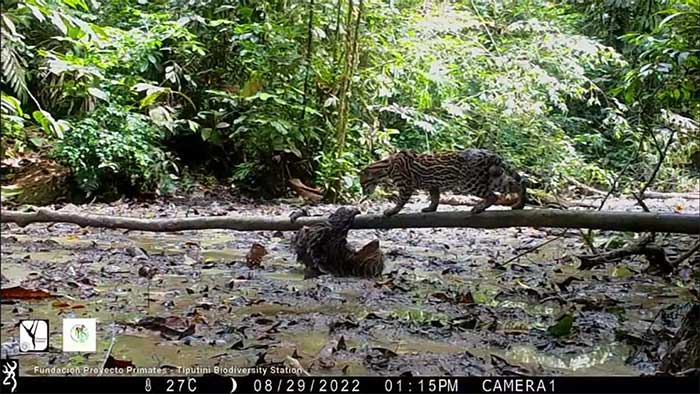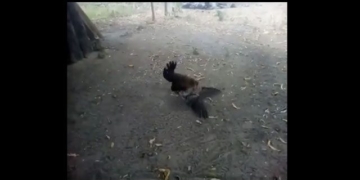Camera traps in the Amazon rainforest have captured rare footage of how a two-toed sloth evaded a swift predator, the Ocelot.
(Video: Camila Bastidas Domínguez)
Known for their tree-dwelling habits and slow movements, sloths are often considered easy prey for any ground predator. However, a camera trap in the Amazon rainforest provided rare footage of such an encounter, revealing how a sloth fought back and escaped from an Ocelot, Science Alert reported on August 10.
The incident took place at the Tiputini Biodiversity Center in Ecuador. The South American two-toed sloth (Choloepus didactylus) was attacked while visiting a mineral lick (a place where animals go to lick essential minerals). The video shows the sloth successfully repelling the attack from the predator, the Ocelot (Leopardus pardalis), by using quick and clever jabs to create an opportunity to escape along a wooden beam across the swamp.
Such footage is extremely rare, according to a research team from the University of the Andes (Colombia), the University of Texas at Austin (USA), and the San Francisco de Quito University (Ecuador). The new study was published in the journal Food Webs.

The camera trap captured the encounter between the South American two-toed sloth and the Ocelot.
- Firstly, predatory attacks are often not recorded on camera.
- Secondly, sloths typically visit mineral licks at night when the area is safer.
- Thirdly, sloths have never been recorded as targets of Ocelots, and experts are uncertain how the predator plans its hunt.
“Both the two-toed sloth and the Ocelot are difficult to study. They are quiet, often elusive, and hard to detect and observe in the wild,” said Anthony Di Fiore, an anthropologist at the University of Texas at Austin.
The research team is unsure whether the sloth escaped without injury due to the limited visibility of the camera trap. However, they visited the swamp two days after the incident and found no evidence of a sloth carcass.
The scientists noted that footage like this is extremely valuable for providing additional insights into the South American two-toed sloth and the Ocelot, including the sloth’s habits and the prey of the Ocelot. This predator typically feeds on smaller creatures such as snakes, turtles, and frogs, but can also attack larger prey. The new study serves as a reminder that animals with slow movements and low metabolic rates can still be formidable opponents against agile creatures in the wild.





















































